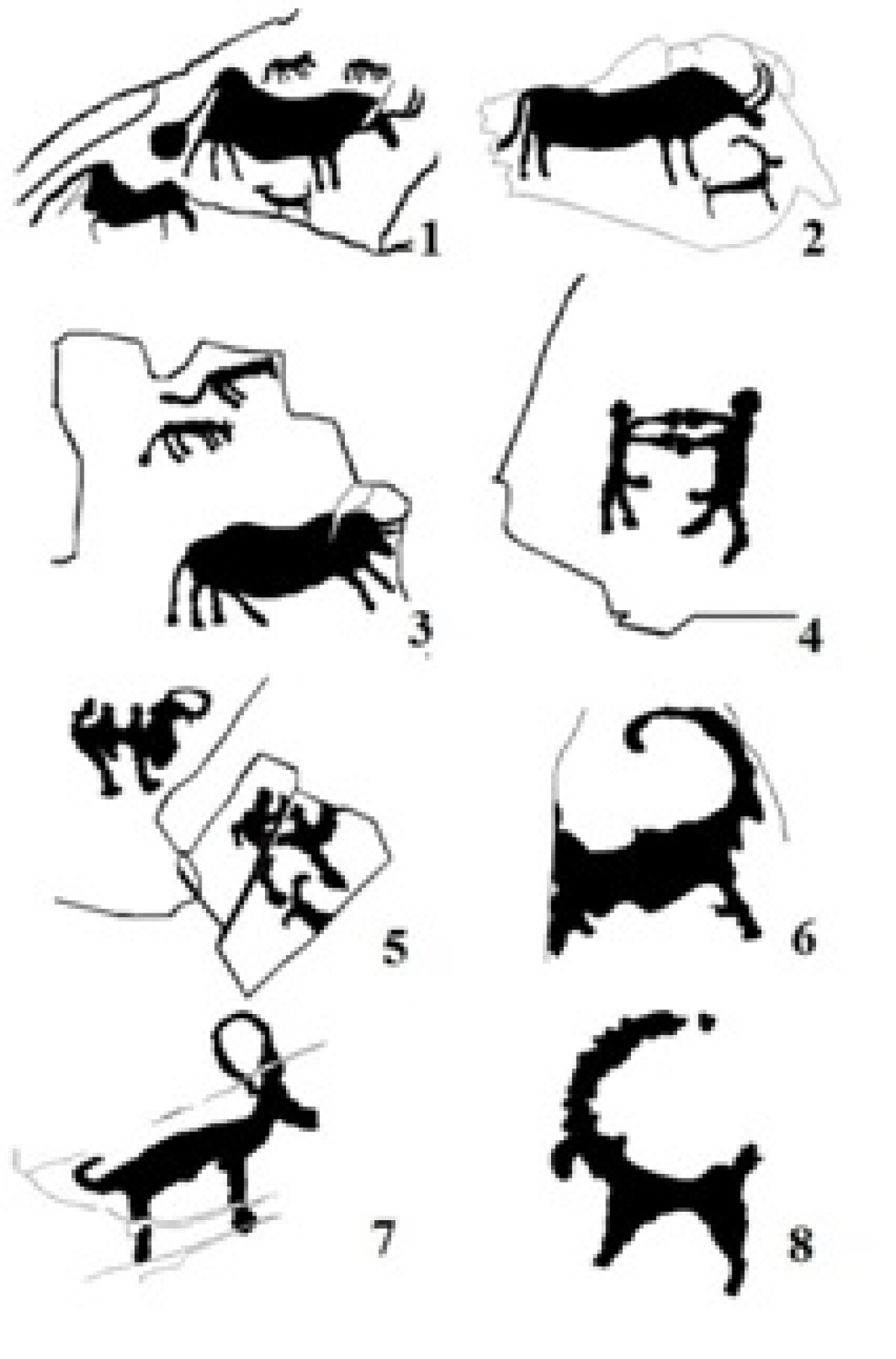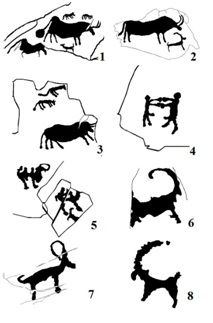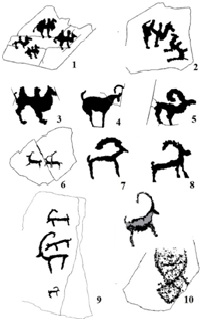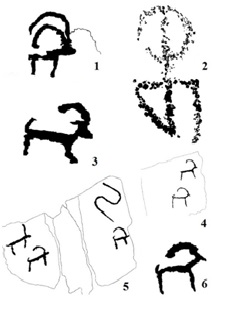
Over the past decade, as a result of archaeological investigations, as large concentrations of petroglyphs as well as small, which contain many interesting material for researchers, were found. Accumulations of petroglyphs in the steppe zone according to the tradition called «sanctuaries» in conjunction with the adjective denoting concepts little, small, minor.
Petroglyphs of Shokpar canyon belong to these monuments. The researchers of the Institute of Archaeology named after A. Margulan and I, the junior researcher of the Institute of Archaeology «Gylym Ordasy» had been worked on the study of it by the program of the basic research.
Petroglyphs were found on the rocks of a narrow Shokpar canyon’s stream that flows in the direction of the meridian. On the east and west sides of the canyon there are valleys that local people calls Sartay and Boribay (Fig. 1). Materials about the culture of the tribes of the Bronze Age, Iron Age and the Middle Ages: cemeteries, settlements and rock carvings are clearly represented in the canyon.
The drawings of individual animals and compositions are shown on the rocks.
The oldest group among them belongs to the Bronze Age (Table 1). First of all, they are images of wild aurochs, camels, horses, wild rams, goats, dogs, men in the scenes of «confrontation». Similar stories are found on many monuments nearby regions. The outstanding petroglyphs among the Bronze Age in the Shokpar canyon are those where scenes with bulls are shown.
They have some common stylistic features: bulls have unnaturally elongated curved horns, on a massive body there with a hump over scapular, on the end tail there are hands in the form of balls. All these signs are known in the petroglyphs of Tamgali and Kolzhabasy where they dated Bronze Age [i]. The name «Tamgaly tradition» of Bronze Age petroglyph has emerged due to this similarity [ii].
The story with the chasing predators of herbivores more appropriate to the early Iron Age, and it is defined as «the scene of torment». However iconographic features of bulls’ images, which are typical for the earliest groups of Tamgaly petroglyphs, allow researchers to believe that this motif in rock art has evolved much earlier, in the Bronze Age [iii]. Semantically similar subjects connected with the cult of the bull.
Among the complex there are layer of petroglyphs, which is defined as an intermediate between the patterns of the Bronze Age and Saks time, which should be identified. These include scenes with camels that are duplicated in the early Iron Age.
20 pieces of Bactrian camels were found in the canyon. They are large and outlined, carved and polished. These drawings of camels found in the canyon are defined as the images of wild animals. They include images of individual camels, herds and camel with baby camel. The presence of the Bronze Age in the story of one camel a semblance of a harness support second dog suggests that shown domesticated camels. Bactrian camel is a common story of rock art in Kazakhstan and Central Asia. Here camel was domesticated and used as a mount and draft animals, according to experts, in the period Andronov and Tazabagyavsky cultures in the 2nd millennium BC.
A series of figures of goats and argali (Table 3: 1, 3, 4, 6) belong to the medieval petroglyphs. Some of them were carved in the early Iron Age and substantially renovated and signs (Table 3: 2, 5) in the tamga form can be attributed to it.
In the composite unity together with the image of herds of goats there is Ϩ-shaped sign, where a small bulge at the upper end and the lower thin suggest that it is the image of a snake. This image is on the monument which is not quite normal- turtle of Muharsk funeral-memorial complex on the Tola River [iv]. The image of tamga was found on a rocky ridge to the north-east from the dwelling and outbuilding (Table 3: 2).
Taking into account the conditions in existence Shokpar «sanctuaries», surely its inhabitants were engaged in cattle breeding and this place is a permanent farmstead pastoralists.
Major religious motives for worship of sacred animals in the Shokpar canyon, as a number of other small complexes, remain unchanged. This situation underlines the traditional way of life of ancient herdsmen of Zhetisu over several historical periods.
Illustrations

Illustration 1. Plan of location of archeological monuments in the Shokpar canyon

Illustration 2. Petroglyphs of Bronze Age of Shokpar canyon

Illustration 3. Petroglyphs of Middle Age and modern times of Shokpar canyon

Ksenia Egorova,
Junior researcher at the Museum of Archaeology of RSE "Gylym Ordasy"
References:
[i] A. Maximov, A. Yermolayeva, A. Maryash, Rock images of Tamgaly area, Alma-Ata, 1985.
[ii] A. Maryash, A. Goryachev, Zhetysu rock images, Almaty, 2002.
[iii] A. Maryash, A. Goryachev, Zhetysu rock images, Almaty, 2002.
[iv] S. Klyashtorny, D. Savinov Steppe empires of ancient Eurasia. St. Petersburg. 2005.
